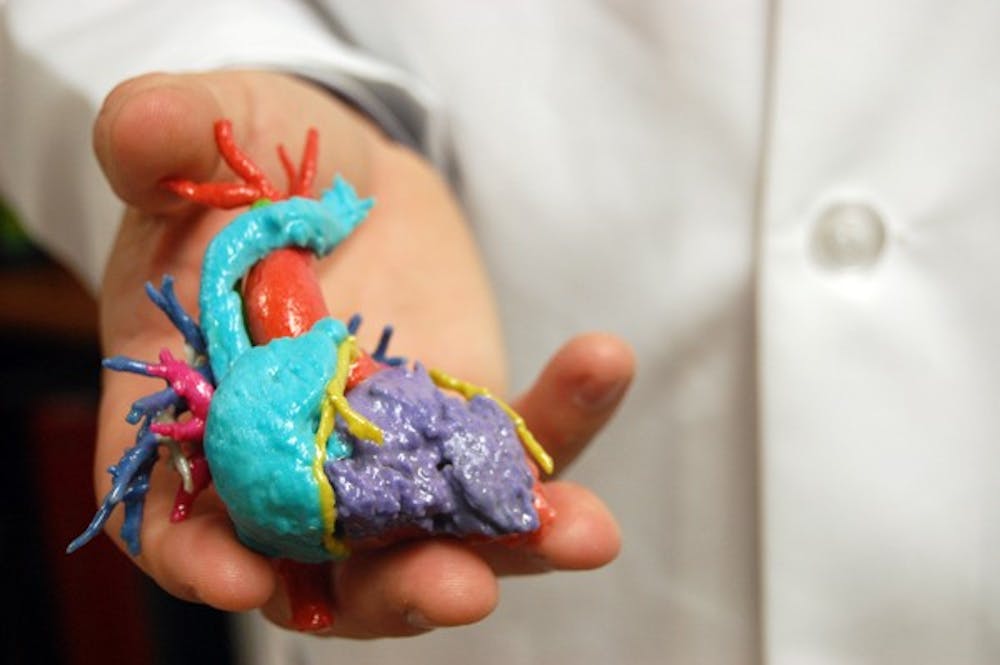The first anatomical and personal heart model that could save the lives of children with life-threatening heart abnormalities was made in a partnership between a local physician and an ASU biomedical engineer professor.
Dr. Randy Richardson, a chairman of radiology of St. Joseph’s Hospital and Medical Center, and David Frakes, an ASU biomedical engineer professor created the “Heart in Your Hand” project in Fall 2008 to help physicians have a better understanding of an individual patient’s heart, especially those with heart abnormalities, Frakes said.
The HYH heart helps doctors study the patient’s heart before operating and reduce the time spent on the operating table, thereby reducing the risk of the patient dying, Richardson said.
The model has only been used for newborns who need heart surgery immediately after delivery, Richardson said.
They take a computerized tomography scan, which is an x-ray of the heart, of the child in the womb and make the heart model before the child is born, he said.
Richardson said they have only made models of infants and young children up to the age of three because they would need more material for an adult heart.
He said he hopes to do adult hearts and do more detailed models like the internal parts of a heart.
Frakes said before the HYH heart, doctors would use books as aids to see heart abnormalities.
“There wasn’t a demand from doctors for it,” Frakes said. “But, it made more sense for a hands-on doctor to have a hands-on model.”
It takes about a week for the heart model to be completed, Frakes said.
First the patient takes a CT scan of their heart then Richardson makes a 3-D model on his computer at St. Joseph’s Hospital.
Richardson then sends the computerized heart on a file to Frakes’ lab on the Tempe campus, where the rapid prototyping machine will encode and print the image of the heart into a colored 3-D model.
Frakes said the goal is to help doctors and resident students have a universal understanding of the heart model color schemes.
“The coloring started with the general convention and has evolved to maximize learning outcomes,” Frakes said.
He said they modeled the colors of the hearts after cardiovascular books that medical, nursing and engineering students use in school.
Richardson said they tested 30 medical students with three types of models: one without color, one with their color scheme and one with a random color scheme.
The students chose the HYH heart model because it was relative to the colors they are used to seeing on the CT scans, Richardson said.
These models are also easy to tell the patient’s diagnosis to the parents, he said.
Biomedical engineer graduate student Justin Ryan worked on the project and said he was excited by the idea of a surgeon knowing the patient’s heart even before the operation.
“I do think it will help people down the line,” Ryan said.
Megan Henriksen, a biomedical engineer graduate, helped Frakes with the computer-processing portion of the project.
"It's nice to know that model I worked has contributed to saving someone's life," Henriksen said.
Reach the reporter at thaniab@asu.edu
Click here to subscribe to the daily State Press newsletter.




